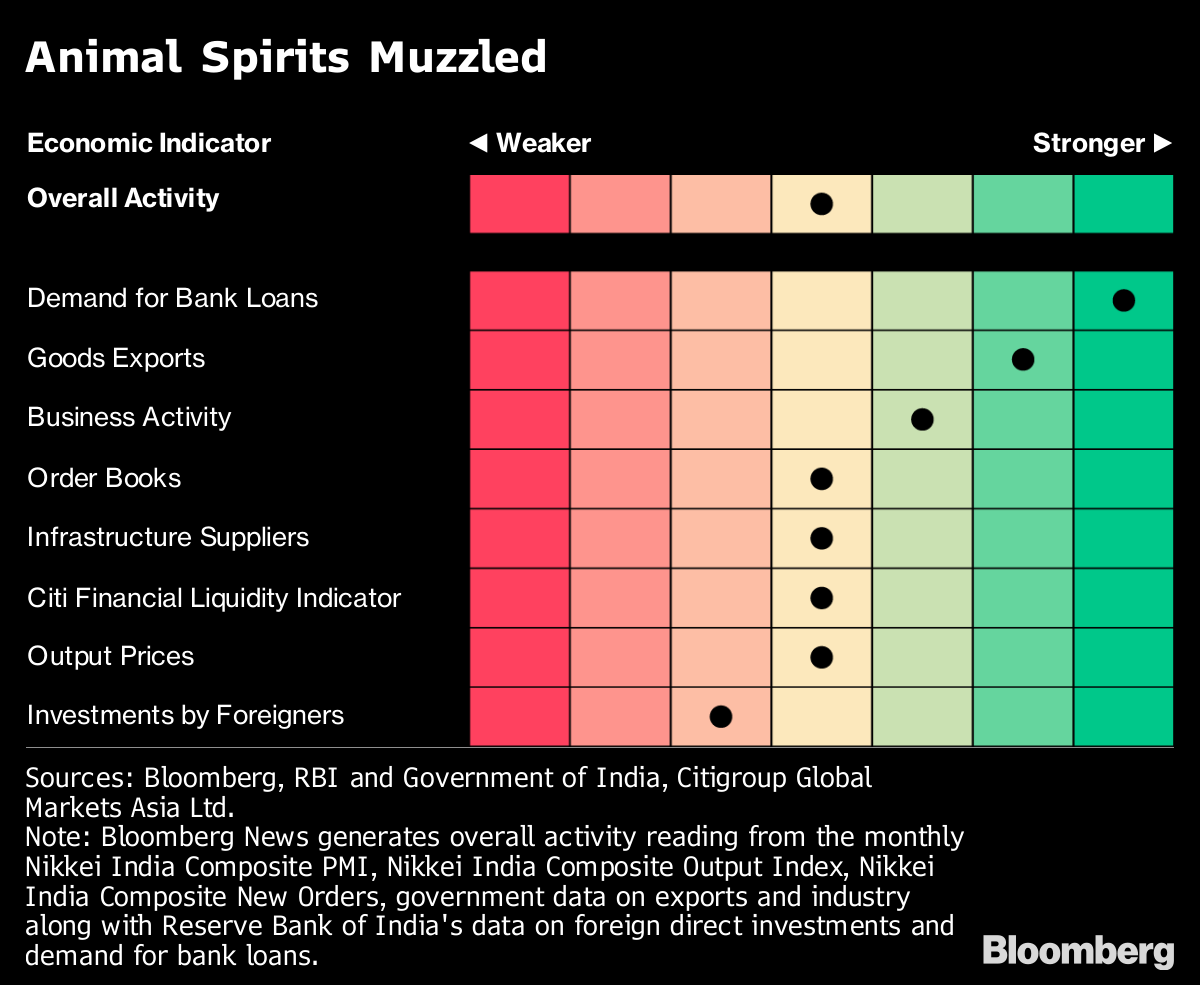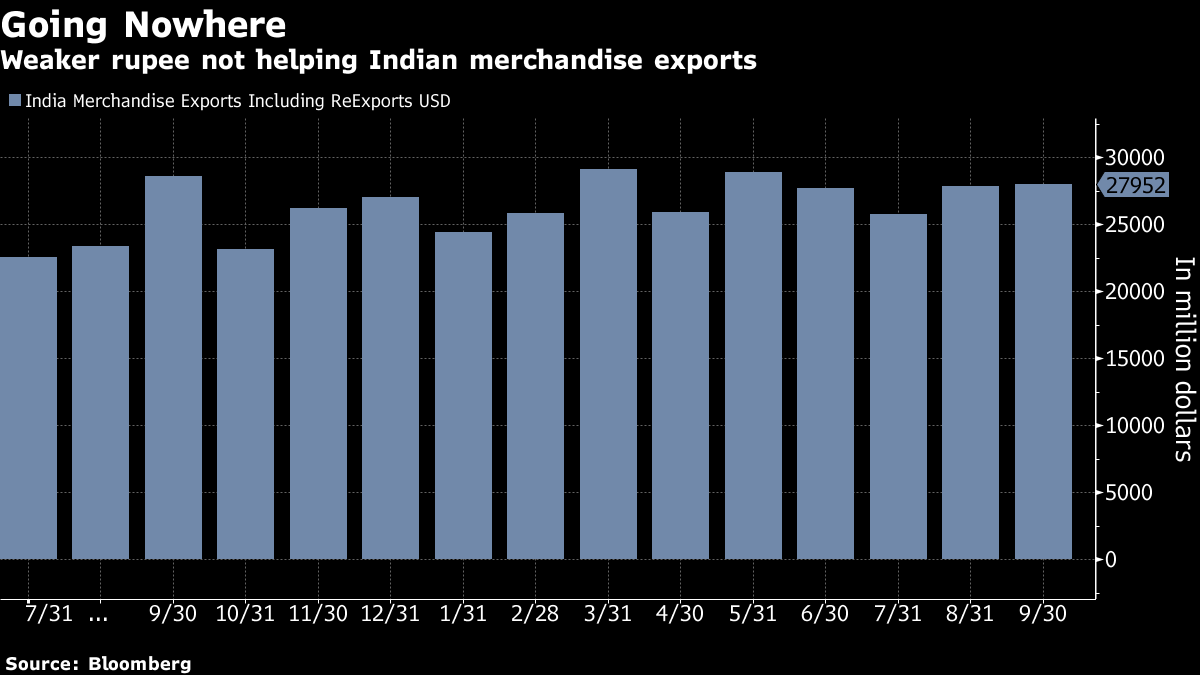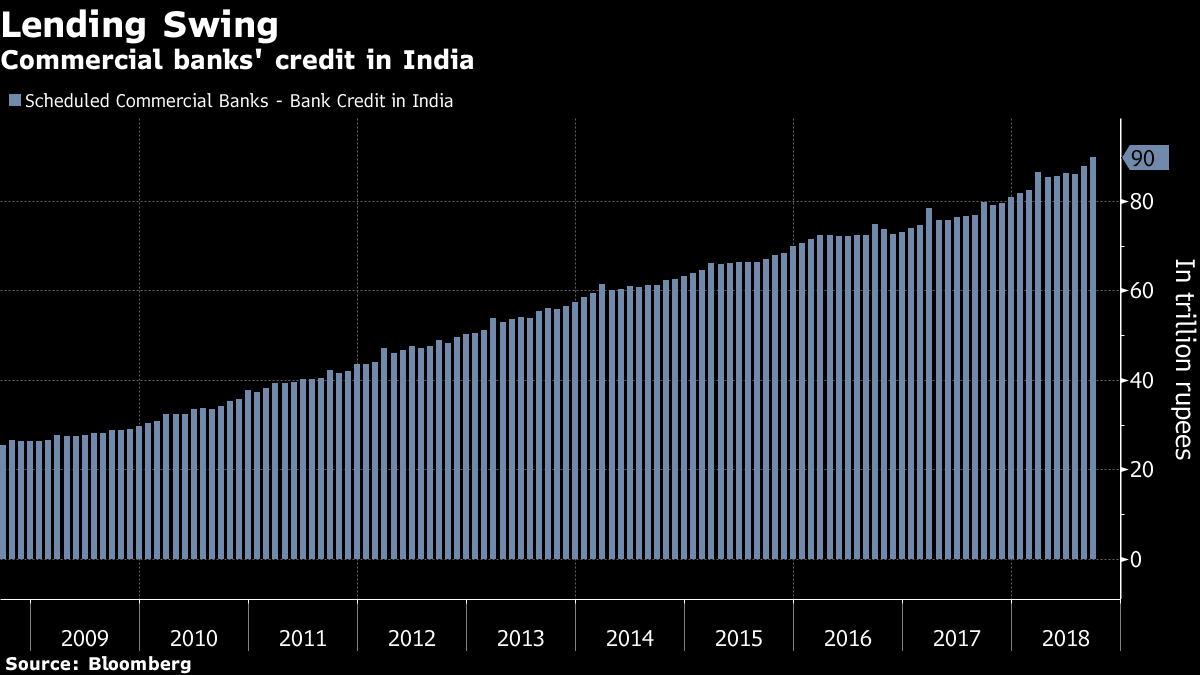
Economic growth in the July-September quarter may have retreated from the 8 per cent plus expansion in the three months ended June, a slew of high-frequency data show.
Mumbai: India’s tight money conditions and fears of a contagion following a debt crisis at a local lender dented demand and put a muzzle on animal spirits in the world’s fastest-growing major economy.
Economic growth in the July-September quarter may have retreated from the 8 per cent plus expansion in the three months ended June as consumption cooled, a slew of high-frequency data show. The overall activity reading moved a notch lower in September to sit in the middle, for the first time since Bloomberg News started tracking the indicators to measure animal spirits — a term coined by British economist John Maynard Keynes to refer to investors’ confidence in taking action.

Signs that consumption, a key driver of growth, is weakening is bad news given the absence of private investments. Here are the full details of the dashboard:
Business Activity
The main services index rose at the slowest pace in four months in September amid near stagnation of new business. Companies reported that market conditions were underwhelming with growth activity slowing in finance and insurance sectors and business services. The Nikkei India Composite PMI Index also fell, as weaker services activity eclipsed a slight improvement in the manufacturing gauge. The services sector accounts for about 55 per cent of the nation’s gross domestic product.
Nevertheless, price pressures intensified, with higher fuel costs and a stronger dollar making imported goods pricier. Still, with headline inflation expected to hover close to, or even undershoot, the central bank’s 4 per cent target in coming months, the central bank is likely to be on hold, having resorted to back-to-back interest rate increases in June and August.
Exports

Exports contracted both in year-on-year terms and sequentially, despite the sharp depreciation in the rupee — which has lost more than 12 per cent against the dollar so far this year. More worryingly, imports also moderated despite high oil prices and belying expectations of a festival season demand for gold. Analysts at Nomura Holdings Inc. say these point toward a potential moderation in domestic growth and a faster-than-expected adjustment to the weaker currency. Overall, external trade is expected to be a drag on growth in the July-September quarter, unlike the previous quarter when exports helped.
Consumer Activity
The Reserve Bank of India’s latest consumer confidence survey serves as a grim reminder that conditions are softening. The current situation index waned in the September survey, reflecting a worsening consumer perception on the general economic situation and the employment scenario, the central bank said. That’s in addition to reduced optimism on spending by consumers.
Data from the Society of Indian Automobile Manufacturers show that private vehicle sales fell in September as rising cost of loans and a sharp spike in domestic fuel prices likely put off buyers. Higher insurance costs are expected to hurt sales of two-wheelers in the coming months, analysts said, although commercial vehicles sales are holding up for now — primarily driven by a healthy demand for trucks.
Meanwhile, bank credit growth slowed to 12.5 per cent in September from a year ago and compared to August’s 13.5 per cent rise. Bloomberg Economics’ Abhishek Gupta said this was likely due to the increase in lending rates over the past few months.
“Tight liquidity conditions in the banking system have been driving up bank deposit and lending rates since March. This is likely to further crimp bank credit growth,” he said.
The Citi India Financial Conditions Index shows a considerable tightening as advance tax outflows, the central bank’s intervention in the foreign exchange market and banks refusing to lend to non-banking counterparts after a default by Infrastructure Leasing & Financial Services Ltd., combined to drive up money market rates. The index incorporates among other indicators, short-term money market rates, government bond yields, the yield curve, credit and credit default spreads.
Economic Activity
Foreign direct investments into India slowed in August, in contrast to Southeast Asia, which is seeing a boom in investments due to the intensifying trade war between the U.S. and China. Political uncertainty, due partly to a general election in India in early 2019, and concerns about policy paralysis are likely to keep many investors on the sidelines.
Problems in India’s struggling financial sector are also likely to weigh on investors’ minds.
Industrial Activity
Growth in infrastructure industries — which contribute 40 per cent to the industrial production index — slowed in August. That was partly due to a decline in output for crude oil and fertilizer and subdued natural gas production. Overall, growth in the index for industrial production also slowed to 4.3 per cent year-on-year in August.













